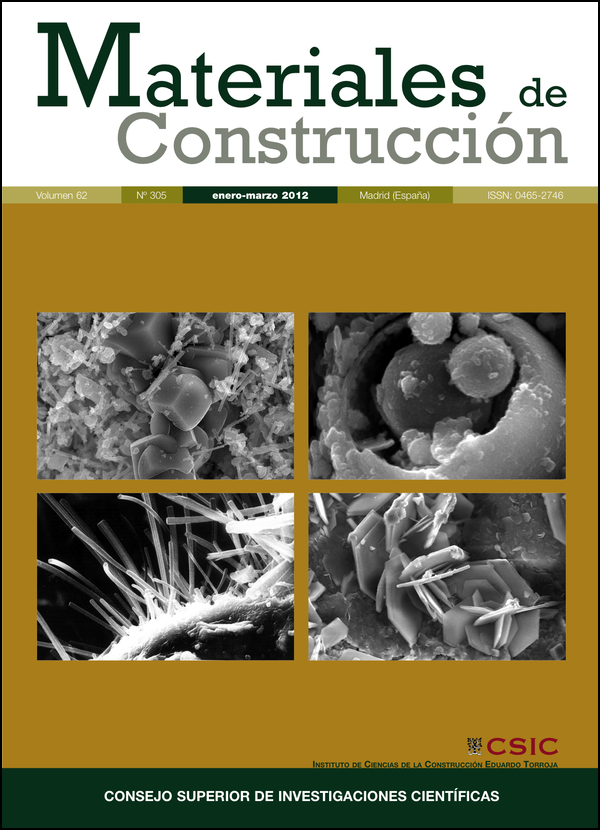Acoustic properties of reed panels
DOI:
https://doi.org/10.3989/mc.2010.60510Keywords:
Reed, sustainable construction, sound absorption, airborne sound insulationAbstract
Reed is a plant species very similar to common cane which is widespread all over the Earth. It is an ecological and sustainable material which is low-cost, aesthetically attractive, easy to obtain and install, and can be used in different construction systems. This work analyses the acoustic properties of reed panels from the point of view of sound absorption and sound insulation against airborne noise, according to the corresponding EN ISO standards. The experimental results obtained point to the conclusion that reed panels are suitable construction systems for controlling reverberant sound within a space, and that the sound reduction index values for different thicknesses of reed panels, or reed panels used in combination with wood particle boards, demonstrate the possibility of using them in construction as an element on the facades and roofs of buildings and for interior partitions.
Downloads
References
(1) Chilekwa, V; Sieffert, G; Egan, C.A.; Oldham, D. “The acoustical characteristics of reed configurations”. Euronoise 2006, Tampere, Finland, May 30-June 1, 2006, en CD-ROM.
(2) European Standard EN 354: 2003. “Acoustics - Measurement of sound absorption in a reverberation room”.
(3) Jiménez-Espada, M. et al. The acoustical potential of reed panels for partitions in sustainable construction. 19th International Congress on Acoustics, Madrid, Spain, September 2-7, 2007, In CD-ROM.
(4) EN ISO 140-3: 1995. “Acoustics. Measurement of sound insulation in buildings and building elements. Part 3: Laboratory measurements of airborne sound insulation of building elements”.
(5) EN ISO 717-1:1996. “Acoustics. Rating of sound insulation in buildings and building elements. Part 1: Airborne sound insulation”.
Downloads
Published
How to Cite
Issue
Section
License
Copyright (c) 2012 Consejo Superior de Investigaciones Científicas (CSIC)

This work is licensed under a Creative Commons Attribution 4.0 International License.
© CSIC. Manuscripts published in both the print and online versions of this journal are the property of the Consejo Superior de Investigaciones Científicas, and quoting this source is a requirement for any partial or full reproduction.
All contents of this electronic edition, except where otherwise noted, are distributed under a Creative Commons Attribution 4.0 International (CC BY 4.0) licence. You may read here the basic information and the legal text of the licence. The indication of the CC BY 4.0 licence must be expressly stated in this way when necessary.
Self-archiving in repositories, personal webpages or similar, of any version other than the final version of the work produced by the publisher, is not allowed.
















